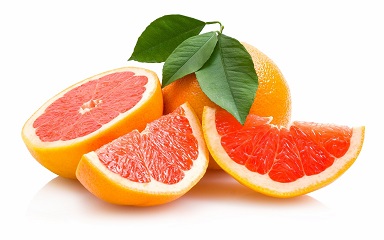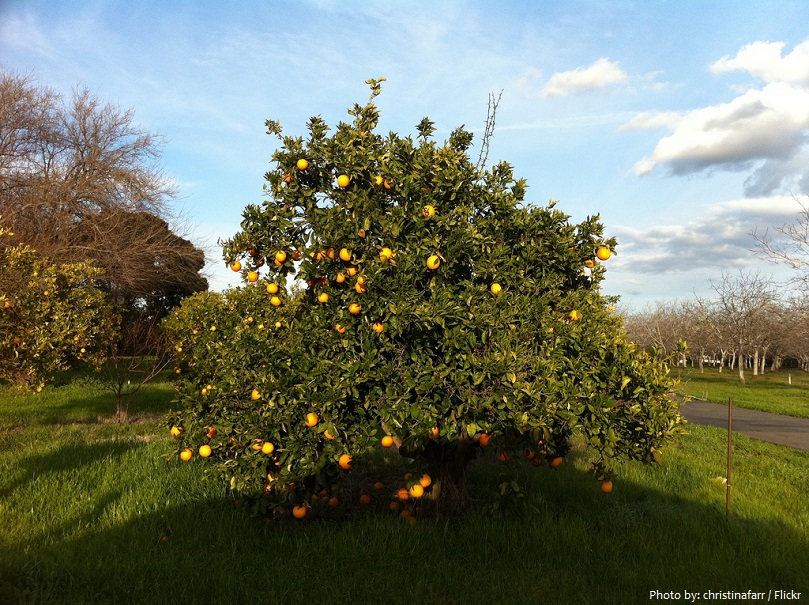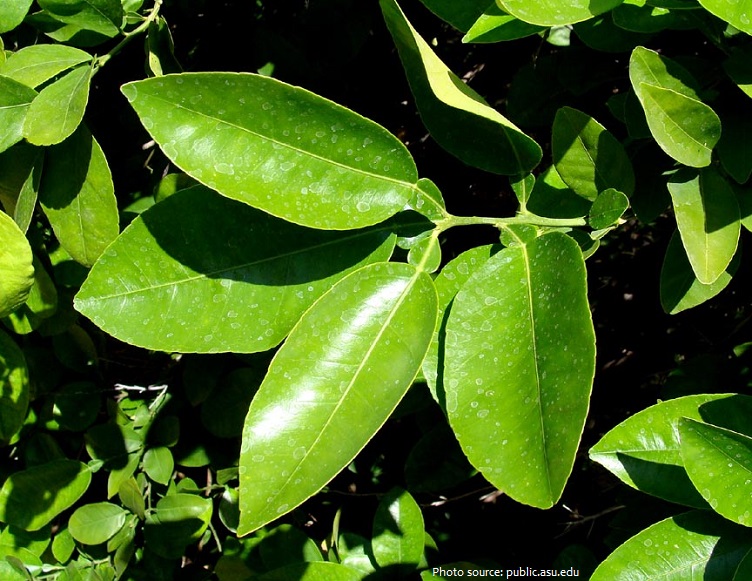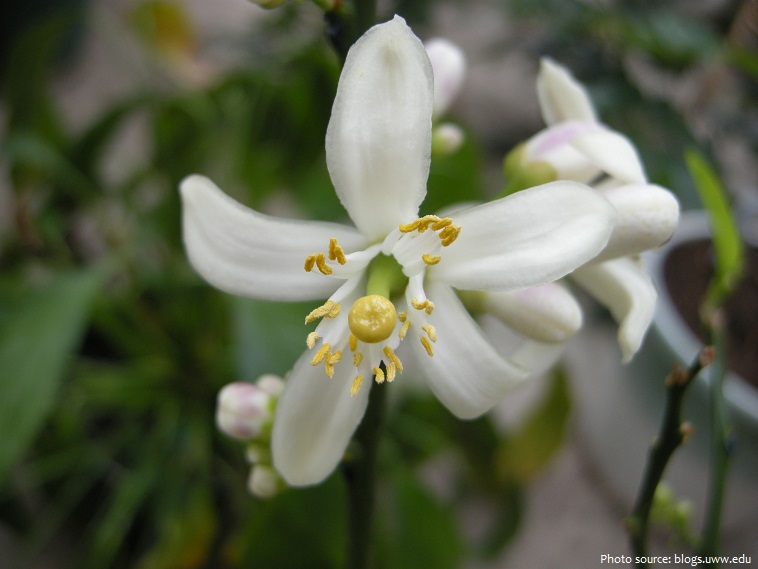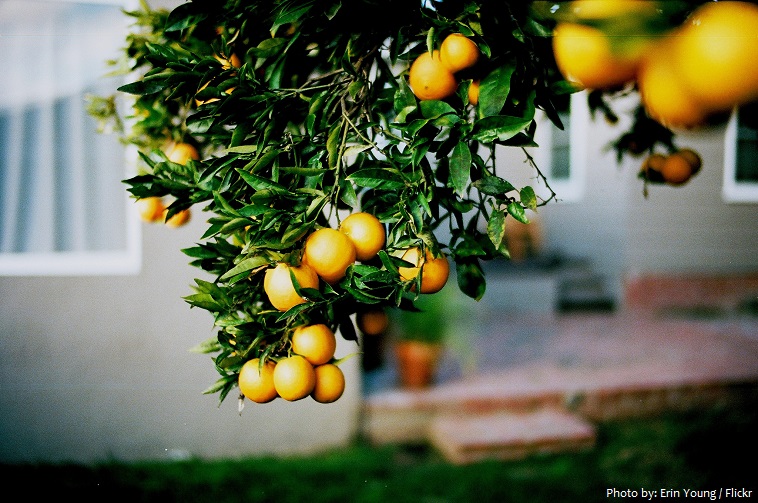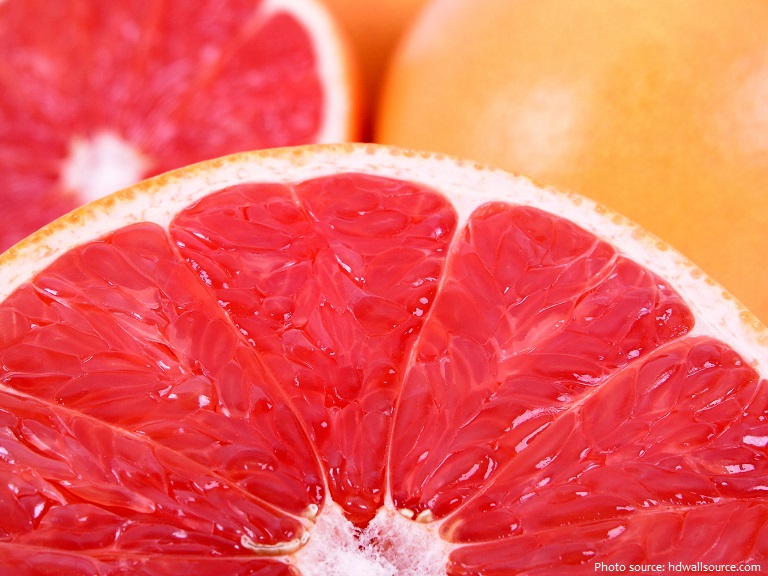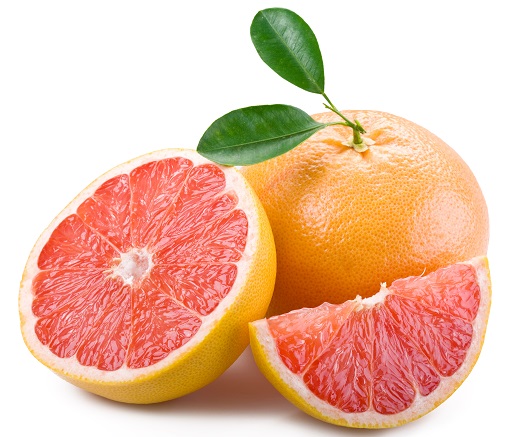The grapefruit is the fruit of the tree of the same name belonging to the Citrus genus of the Rutaceae family.
It was created in Barbados when the sweet orange and pomelo were accidentally bred together. Both ancestor of the grapefruit were introduced from Asia in the seventeenth century.
The fruit was first documented in 1750 by a Welshman, Rev. Griffith Hughes, who described specimens from Barbados in The Natural History of Barbados.
When found, it was named the “forbidden fruit”; and frequently, it has been misidentified with the pomelo.
It wasn’t until the 1800s that a Jamaican farmer coined the term “grapefruit.”
The name grapefruit first appeared in English in a work by botanist John Lunan, Hortus Jamaicanensis (1814).While the name apparently arose because the fruit grows in grape-like clusters, and can imaginatively be looked at as grapes when small and green, Lunan had stated that it was “known by the name of grape-fruit, on account of its resemblance in flavor to the grape.”
Botanically, the grapefruit was not distinguished from the pomelo until the 1830s, when it was given the name Citrus paradisi. Its true origins were not determined until the 1940s. This led to the official name being altered to Citrus × paradisi.
The average lifespan of a grapefruit tree is approximately 50 years.
The evergreen grapefruit trees usually grow to around 5–6 meters (16–20 feet) tall, although they may reach 13–15 meters (43–49 feet).
The leaves are glossy, green, long (up to 15 centimeters (5.9 inches)), and thin.
The flowers are solitary or in small corymbs (a branched cluster of flowers with lower flowers having longer stems). Each flower is 2 to 4 centimeters (0.8 – 1.6 inches) in diameter, with five (rarely four) white petals and numerous stamens; they are often very strongly scented.
The fruit is yellow-orange skinned and generally, an oblate spheroid in shape; it ranges in diameter from 10 to 15 cm (3.9–5.9 inches).
The flesh is segmented and acidic, varying in color depending on the cultivars, which include white, pink, and red pulps and flavors range from highly acidic and somewhat sour, to sweet and tart.
The grapefruit have been a popular breakfast fruit in America for over eighty years. Topped with sugar or an artificial sweetner, fresh is clearly the best and most nutritious of the ways to eat grapefruit.
There are 42 calories in 100 grams (3.5 ounces) of grapefruit.
Grapefruit has many nutritious elements. It is an excellent source of vitamin A (in the form of carotenoids) and vitamin C. Grapefruit is also a good source of pantothenic acid, copper, dietary fiber, potassium, biotin and vitamin B1. It also contains phytochemicals including liminoids and lycopene.
The health benefits of grapefruit include weight loss, help to maintain a healthy heart, decreased risk of cancer, boosts up the immune system, helps in controlling diabetes, helps lower cholesterol, promote regularity for a healthy digestive tract, healthy skin, improvements in memory and cognition as well as the prevention of neurodegenerative conditions and lower a woman’s risk of stroke.
In Haiti, grapefruit is used to make jam.
In Costa Rica, grapefruit are often cooked to remove their sourness, rendering them as sweets; they are also stuffed with dulce de leche, resulting in a dessert called toronja rellena (stuffed grapefruit).
Grapefruit juice is used in several cocktails, such as the sea breeze (which consists of grapefruit juice, vodka, and cranberry juice); the salty dog, and the grapefruit mimosa.
Grapefruit peel oil is used in aromatherapy and it is historically known for its aromatic scent.
The fruit became popular only from the late nineteenth century; before that it was grown only as an ornamental plant.
Grapefruit and grapefruit juice can have a number of interactions with drugs, often increasing the effective potency of compounds. The effect of grapefruit and grapefruit juice with regard to drug absorption was originally discovered in 1989. However, the effect became well-publicized after being responsible for a number of deaths due to overdosing on medication.
An early pioneer in the American citrus industry was Kimball Atwood, a wealthy entrepreneur who founded the Atwood Grapefruit Company in the late nineteenth century. The Atwood Grove became the largest grapefruit grove in the world, with a yearly output of 80,000 boxes of fruit. It was there that pink grapefruit was first discovered in 1906.
Today, China is the top producer of grapefruit; it is followed by the United States and Mexico.
The world’s largest grapefruit was grown by Cloy Dias Dutra (Brazil), weighed 3.210 kg (7 lb 1 oz) and had a circumference of 70 cm (2 ft 3 in) Niteroi, on 9 November 2006.
The Texas Red Grapefruit was designated as the official fruit of Texas in 1993; Texans have grown grapefruit in the Rio Grande Valley for about 100 years.
Grapefruit has 92% water more than almost any other fruit.
According to a study by the Smell and Taste Institute of Chicago, men perceive women to be up to six years younger than they actually are when they catch a whiff of grapefruit scent.

